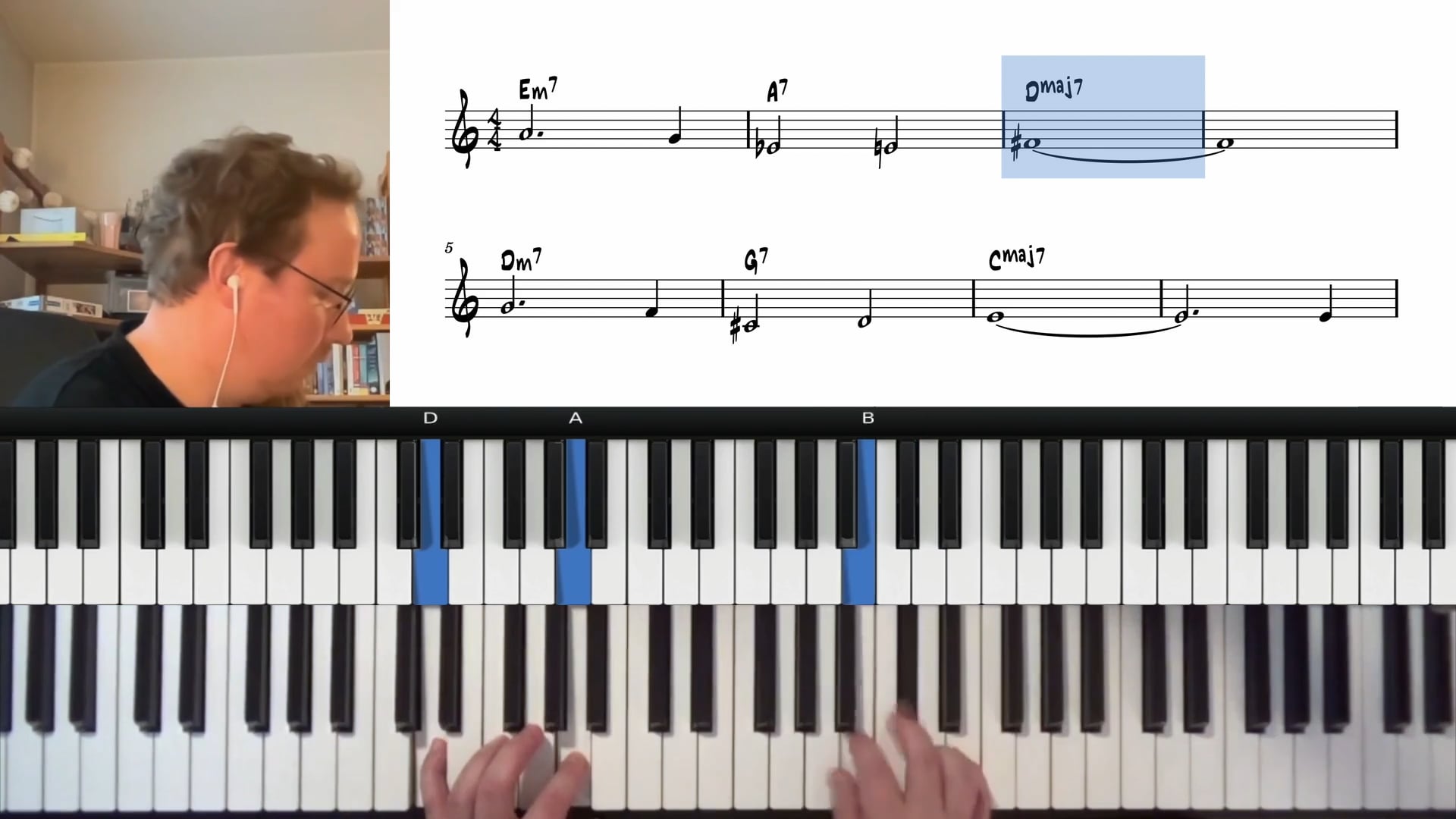
Hayden Hill
Hayden founded PianoGroove in 2015 with the goal of making the world a more musical place. He shares his love for jazz piano through his online courses and manages the community area of PianoGroove.
Seminar Description
Seminar Description
Introduction to the Licks & Lines Library
Welcome to this lesson on jazz improvisation and transcription. In this session, we introduce the Licks & Lines Library, a new section designed to help you build a strong vocabulary of jazz phrases by studying the language of master musicians.
Transcription is a fundamental skill in jazz, helping you develop an authentic sound by internalizing classic jazz lines. We begin by understanding why transcription is crucial, then move on to practical exercises, taking a specific line through all 12 keys and applying it to jazz standards like "Misty" and "The Nearness of You."
The Importance of Transcription
Learning the Jazz Language
Just as an artist studies the great painters or a writer reads literature, a jazz musician learns by listening and transcribing. The best way to develop an authentic jazz sound is to absorb, analyze, and recreate lines from the greats.
Finding Your Sound
Before transcribing, identify the musicians and recordings that inspire you. Whether it’s Red Garland, Hank Jones, or Tommy Flanagan, studying their phrasing, articulation, and harmonic choices will help shape your personal style.
Using a Structured Approach
Transcription isn’t just about copying—it’s about understanding and applying. The Licks & Lines Library provides carefully selected phrases that exemplify key elements of jazz improvisation. Each line is chosen for its practical application in real-world playing situations.
Mastering a Jazz Line: Step-by-Step
Step 1: Analyze the Line
We begin with a Red Garland-inspired 2-5-1 phrase over G-7 to C7 to Fmaj7:
🎵 Listen to the line and identify key tones:
- Starts on the 9th of G-7
- Moves through a G minor triad
- Targets an altered C7 sound using a chromatic enclosure
Step 2: Internalizing the Pattern
To fully absorb the line:
- Sing it before playing
- Play it slowly, looping it over a 2-5-1 progression
- Break it into sections, focusing on smooth voice leading
Step 3: Taking It Through 12 Keys
The next step is moving the phrase around all keys using the whole-step 2-5-1 cycle:
- Play the root movement in all 12 keys
- Add basic voicings (rootless or shell voicings)
- Play the lick in each key, focusing on hand positioning
This process strengthens interval recognition, muscle memory, and harmonic understanding.
Applying the Line to Jazz Standards
🎼 "The Nearness of You"
- The A section contains multiple 2-5-1s (Bbmaj7, G-7 to C7, etc.), making it perfect for inserting the line.
- The diminished passing chord (Bb°) can function as A7, C7, Eb7, or Gb7, allowing for dominant applications of the lick.
- Example: Over A-7 to D7, use the line with an altered D7 sound.
🎼 "Misty"
- This tune features A-7b5 to D7 to Gmaj7, a minor 2-5-1 where a similar altered approach can be applied.
- The tritone sub concept allows you to play a G7 altered line over Db7, leading to smooth voice leading.
- Example: Over G-7 to C7 to Fmaj7, the lick smoothly integrates into the melody.
5 Practice Tips
- Transcribe by Ear – Avoid notation until you’ve memorized the phrase.
- Use a Whole-Step Cycle – Take the lick through six 2-5-1 progressions to cover all 12 keys efficiently.
- Identify Key Targets – Focus on landing on strong chord tones (3rd, 5th, 7th).
- Modify & Experiment – Use parts of the lick in different ways (e.g., just the dominant phrase).
- Apply to Real Tunes – Practice embedding the lick into jazz standards like Misty and The Nearness of You.
By following these steps, you will develop a strong jazz vocabulary that naturally integrates into your improvisation. The Licks & Lines Library is a valuable resource—take your time, enjoy the process, and let these classic jazz phrases inspire your playing! 🎶







